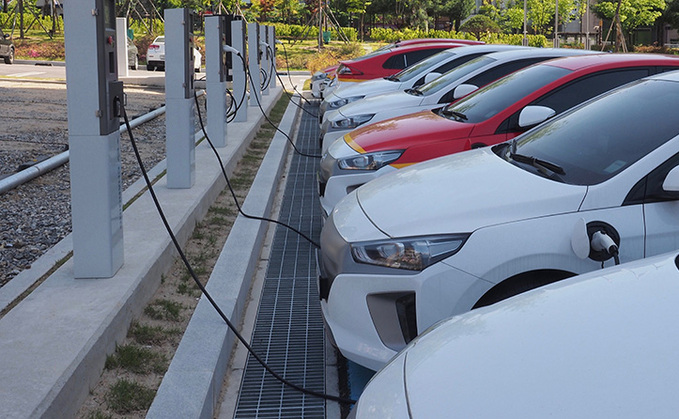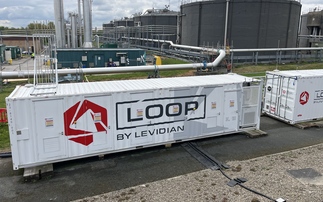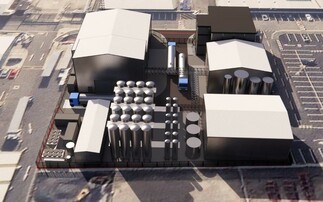
Latest batch of carbon analysis from electronics giant reveals how clean technologies can help slash emissions from transportation and distribution
Can a company that helps produce clean technologies harness those same technologies to meet its own climate goals? That is the question sparked by a new update from a major division of Japanese technology giant Panasonic this week, which saw the company publish fresh carbon data that highlights the critical need for green transport solutions that can help firms reduce the impact of their distribution and transportation networks.
At a virtual event on Thursday afternoon, the president of Panasonic Industry Europe, Johannes Spatz, said fresh carbon footprint analysis had found that some 86 per cent of the firm's emissions in 2020 were the result of the transport and distribution of its goods to end consumers. The German-headquartered company first started collecting carbon data in 2020, and as such the data unveiled yesterday provides the first year-on-year comparison of its climate impact. The company, which produces components for a range of industrial customers, including electric vehicle (EV) manufacturers and charge point operators, operates 16 factories across Europe, and has supply chains that extend across the continent.
While the 2020 carbon figures were heavily skewed by the impact of the Covid-19 pandemic - the company's overall emissions fell from 24,000 tonnes to 21,000 tonnes of CO2 equivalent - the exercise had provided valuable insights into where action was most needed, Spatz explained.
"We still have a long way to go with reducing emissions in transportation and distribution, which requires the progressive involvement of our logistic partners and the introduction of innovative systems," he reflected.
Panasonic Industry Europe's product line dovetails neatly with its decarbonisation ambitions, Spatz noted, pointing to the company's position as a leading manufacturer of components for EV batteries, electric charge points, as well as car infotainment solutions and automotive safety and security solutions.
Alexander Shultz-Storz, director of cross-value and open innovation division, provided more detail about how the company's solutions were helping to drive the EV transition. He said the firm is the number one producer of film capacitors and EV ehicle relays for the automotive industry, components that maximise the efficiency and safety of vehicles with electric power trains.
"Panasonic is a pioneer in designing and producing of hydrogen-sealed relay technology," he told attendees at the virtual event. "This unique design is essential in controlling battery voltages in hybrid and pure electric vehicles, and essential to the EV and hybrid electric vehicle development."
Beyond vehicle solutions, the company also produces components for a broad range of charging infrastructure, including charging infrastructure for various types of EVs, from e-bikes and e-scooters to public mobility solutions like e-passes, as well as logistics vehicles such as trucks and forklifts, he said.
Panasonic Industry Europe published its latest carbon figures just a few months after Panasonic global unveiled a bold new sustainability agenda this January dubbed Panasonic Green Impact, which includes a plan to deliver 'carbon neutrality' by 2030 and achieve net zero across its value chain by 2050. The company is a major supplier to car manufacturers around the world and in January revealed that it would start production of a next-generation lithium-ion battery in 2023, annoucing it already had a deal in place to supply these batteries to long-time partner Tesla.
Speaking to BusinessGreen after the event, Spatz said Panasonic Industry Europe will be playing a major role in meeting these ambitious global goals. But he noted that all regions would first have to get a good understanding of their emissions footprint to help inform decarbonisation efforts and share best practices with divisions around the world. "If everybody in the different regions does their homework, the time will come where we exchange more," he said. "We have learned a lot over the last two years - about where we have more impact, less impact, what we can do to contribute more or less. This is an exercise everybody needs to do."
Driving net zero across the global company's entire value chain by 2050 will be no small feat; the company has calculated that emissions generated by its products were roughly 40 times more than the amount emitted from its factories, given that more than one billion people worldwide used its products.
Spatz said Panasonic Industry Europe might look to expand the remit of its Scope 3 emissions calculations to count emissions generated by the use of its products in the future. "Our Scope 3 [calculations currently cover] factory output in the warehouse to the customer, but the intention is there to widen the Scope 3 to product usage," he says. "This is a really big challenge."
He also suggested there might be an opportunity for Panasonic Industry Europe to meet its net zero goals by producing products that would enable it to credibly claim to be delivering negative emissions. "At Panasonic we have the possibilities, with hydrogen fuel cells and other products, where we can actively support renewable energy generation or save energy from certain products," he said.
In the short term, he noted the company's first priority would be to reduce the emissions within its direct control - the Scope 1 and 2 emissions generated at 16 different factories across Europe, including its UK headquarters in Bracknell, Berkshire.
Ongoing projects at its sites include the installation of solar panels, roll out of building energy monitoring systems, and the introduction of charging stations for EVs, e-bikes, and scooters - technologies that Panasonic frequently provides components for.
Looking to the future, he said the company aimed to provide a "continuous improvement cycle" over the coming years by using further insights generated from its carbon datsa collection to identify where it could work to deliver further savings.
"Our message today was [designed] to be precise and concrete," he said. "We are working under [Panasonic's] Green Impact umbrella. Its nice to have a good umbrella, but at the end of the day what counts is what we are doing and how we can contribute to the whole programme."
Want to help celebrate and showcase the best of the green economy? You can now enter the BusinessGreen Leaders Awards 2022 and be in with a chance of joining us at the UK's largest and most prestigious green business awards this summer.
Panasonic is a partner of BusinessGreen's Net Zero Innovate Hub.










